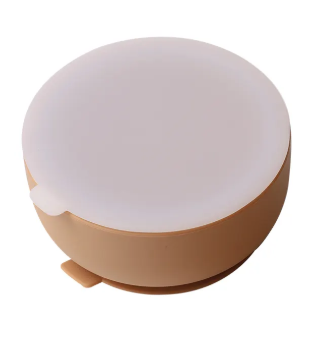Material Safety: Silicone vs. Plastic for Baby Products
BPA and Chemical Risks in Plastic
BPA (Bisphenol A) and other chemicals found in plastics are raising concerns about baby product safety. Research highlights that BPA can interfere with hormonal functions, leading to developmental issues in infants. For instance, studies indicate that exposure to BPA can increase the risk of behavioral problems and affect brain development. Moreover, certain plastics, such as polycarbonate and PVC, can leach harmful substances into food and drink, especially when heated, posing additional health risks. The FDA and EPA have issued guidance and regulations to mitigate these risks, emphasizing the need for caution in choosing plastic baby products. As awareness grows, parents are encouraged to opt for BPA-free alternatives to ensure their children's safety.
Silicone's Non-Toxic and Hypoallergenic Properties
Silicone is gaining popularity as a safer alternative to plastic due to its non-toxic and hypoallergenic characteristics. Made from natural silica and synthetic compounds, silicone is free from common allergens, making it ideal for baby products. Scientific studies and endorsements from pediatricians confirm its safety, noting that it does not release harmful chemicals, even when heated. Silicone bowls and feeding sets are especially favored, as they are gentle on delicate gums and enable worry-free mealtime experiences. As more parents prioritize health and safety, silicone's hypoallergenic properties make it a reliable choice for nurturing healthy feeding habits in babies.
Heat Resistance and Durability Compared
Microwave and Freezer Safety
Silicone bowls are renowned for their superior heat resistance compared to plastic alternatives. Unlike plastic, silicone can endure extreme temperatures without melting or leaching harmful chemicals, making them ideal for microwave and freezer use. For instance, silicone bowls generally withstand temperatures ranging from -40°C to 260°C, providing versatile functionality in kitchen settings. User testimonials often praise silicone bowls for their effectiveness and safety, particularly noting that they maintain their shape and safety when exposed to both high heat and freezing conditions. This heat resistance ensures not only the safety of food for your baby but also offers practical convenience for busy parents.
Cracking vs. Flexibility: Longevity of Use
The flexibility of silicone stands out as a key advantage over plastic, which tends to crack or break under stress and impact. Silicone's pliable nature means it can absorb bumps without shattering, contributing to a longer lifespan for products made from it. Reviews often highlight the longevity of silicone items, noting that their durability can lead to cost-effectiveness over time, as they need replacing less frequently than plastic alternatives. Additionally, some manufacturers offer warranties or recommend silicone for its resilience and reliability, supporting claims about its value in baby products. This durability ensures that silicone bowls remain intact and safe for daily use, making them a preferred choice for parents.
Cleaning and Maintenance: Silicone vs. Plastic
Stain and Odor Resistance
Silicone stands out for its impressive stain and odor resistance compared to plastic, thanks to its non-porous surface. Unlike plastic materials that can absorb food odors and stains over time, silicone remains unaffected and retains its original form. Numerous parents have shared positive experiences in surveys, noting how easy it was to maintain silicone products without dealing with lingering smells or stains. To maintain hygiene with silicone products, simply wash them with warm, soapy water or place them in the dishwasher for effortless cleaning. On the other hand, plastic may require more intensive cleaning methods to remove odors and stains, which can be cumbersome for busy parents.
Dishwasher Safety and Hygiene
Silicone products are generally safe for dishwasher use, as they can withstand high temperatures that ensure effective cleaning and disinfection. This offers a practical advantage for parents who prefer the convenience of dishwashing over handwashing. Statistically, a majority of parents find dishwashing more effective in maintaining hygiene. However, improper cleaning methods can lead to degradation of both silicone and plastic products. High dishwasher heat settings can sometimes warp plastic items. Hence, following manufacturer guidelines regarding temperature limits is essential for both materials to prolong their lifespan and ensure their safety.
Environmental Impact and Sustainability
Recyclability and Biodegradability
When it comes to recyclability and biodegradability, silicone and plastic offer different environmental outcomes. Silicone is a hybrid material that can be recycled at dedicated facilities, which recognizes it as a sustainable choice. Unlike plastic, silicone does not degrade into harmful microplastics when disposed of, and it boasts a longer life span. On the other hand, plastic recycling is widespread, but its biodegradability is negligible, often contributing to environmental pollution. Initiatives like eco-friendly certifications specifically promote silicone for baby products, underlining its importance in sustainability due to its safer disposal practices. Hence, silicone emerges as a preferred material in the eco-friendly market, especially for conscientious parents transitioning from conventional materials.
Eco-Friendly Lifespan of Silicone
Silicone products are known for their remarkable durability, which extends their lifespan considerably compared to disposable plastic items. This longevity means that silicone bowls can be used for years, significantly reducing waste and contributing to an eco-friendly lifestyle. Case studies have highlighted families using silicone bowls for extended periods, demonstrating practical sustainability and reducing environmental impact. The transition from plastic to silicone is noted in current consumer trends, with a wider acceptance and preference in eco-friendly living. By using silicone, families directly contribute to efforts aimed at reducing plastic consumption, emphasizing the sustained value silicone offers over time in mitigating ecological footprints.
Practical Considerations for Parents
Suction Risks and Design Safety
Silicone bowls with suction bases have gained popularity for their functional design and ability to keep meals stable during feeding time. These bowls use suction features to adhere firmly to a table or highchair, preventing spills and making feeding less chaotic. While this design is generally effective, it's important to be aware of potential safety concerns. Some parents worry about the strength of the suction, as overly powerful suction might be challenging for parents to release, while weaker suction could lead to frustration if the bowls keep detaching. Feedback from parents often highlights a balance in suction strength as ideal for functionality without safety risks. Additionally, safety standards in baby products, such as those from the Consumer Product Safety Commission, ensure that manufacturers design silicone baby products with user safety as a paramount consideration. Understanding these factors helps parents make informed choices about the most suitable dinnerware for their children.
Balancing Cost, Functionality, and Safety
When considering the cost of baby tableware, it's crucial to weigh the initial investment against long-term benefits. Silicone baby products, while often more expensive than plastic alternatives, are praised for their durability and non-toxic properties, which many parents find valuable in the long run. Research indicates that parents prioritize functionality and safety over price when selecting baby products, with studies showing a significant inclination towards products that offer longevity over cost savings. For instance, products like the Kiddobloom Dinnerware Set, although pricier, are appreciated for their durability and health benefits. To make an informed purchase, parents should assess their needs and budget by considering factors such as product lifespan, maintenance requirements, and safety certifications. Opting for high-quality silicone products ensures a balance between functionality and the safety of their little ones, ultimately leading to greater satisfaction and peace of mind.
FAQ Section
Is silicone a safer option for baby products compared to plastic?
Yes, silicone is considered a safer option for baby products as it is non-toxic, hypoallergenic, and does not release harmful chemicals, even when heated.
What chemicals in plastic are concerning for infant safety?
Bisphenol A (BPA) and substances in certain plastics like polycarbonate and PVC can leach harmful chemicals, raising concerns over infant safety.
Can silicone products be microwaved and frozen safely?
Yes, silicone products can safely withstand extreme temperatures, making them ideal for use in both microwave and freezer settings.
How does silicone contribute to environmental sustainability?
Silicone contributes to environmental sustainability through its recyclability and long lifespan, reducing waste and not degrading into harmful microplastics.


